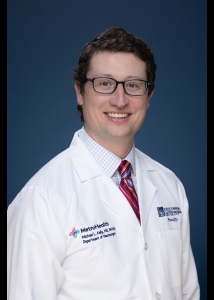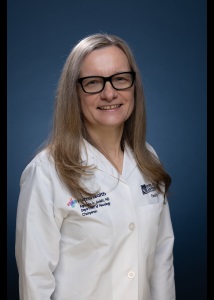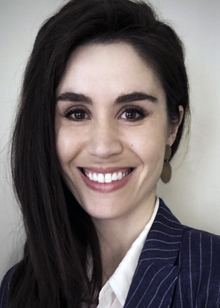- Home
- Population Health and Equity Research Institute
- Pilot Grant Programs
- Pilot Grant Awardees
2024 Pilot Grant Awardees
Kristen Berg, PhD: The NAVIGATE (Neighborhood Assessment Via Inclusive Gathering and Timely Evaluation) pilot study: A blueprint for rigorous, ongoing assessment of urban land disposition for improving health equity
 This research project partners with the Western Reserve Land Conservancy (WRLC) to create a blueprint for assessing how land use and re-greening strategies in Cleveland can improve public health and strengthen neighborhoods’ resilience to climate change.
This research project partners with the Western Reserve Land Conservancy (WRLC) to create a blueprint for assessing how land use and re-greening strategies in Cleveland can improve public health and strengthen neighborhoods’ resilience to climate change.
This work focuses on neighborhoods with a history of discriminatory practices, where vacant land, poor air quality, and limited green spaces contribute to health disparities. By analyzing common health issues and the benefits of re-greening vacant parcels, the study will develop tools to prioritize health-focused urban greening efforts.
This research extends a multi-year collaboration with the WRLC and builds pilot data critical for larger grant mechanisms assessing the longer-term health and climate benefits of urban greening on population health. Findings will help shape policies that promote climate justice and equitable land use in Cleveland and beyond.
Susan De Luca, PhD: Una clase de cocina para prevenir el suicidio: preventing suicide and diabetes utilizing a culturally informed mother-daughter cooking class
 Latina adolescents have reported the highest rates of suicidal ideation and attempts for over 30 years, and Latinos are 1.5x’s more likely to die from diabetes compared to non-Hispanic white peers. Roughly 46% of Latino youth will be diagnosed with T2D compared to non-Hispanic white peers (14%).
Latina adolescents have reported the highest rates of suicidal ideation and attempts for over 30 years, and Latinos are 1.5x’s more likely to die from diabetes compared to non-Hispanic white peers. Roughly 46% of Latino youth will be diagnosed with T2D compared to non-Hispanic white peers (14%).
Mother-daughter mutuality is a unique factor related to Latina adolescent suicide risk, but not included in Latina adolescent suicide interventions. Common risk factors for suicide and diabetes risk include depression, social isolation, and diet.
We will create a mother-daughter cooking class teaching participants healthy meals designed by members of the local Latino community (thus culturally informed adapted meals), taught by a bilingual dietician, and offering time for mother-daughter dyads to engage in connecting conversations during preparation and cooking times, and processing these experiences with a family meal at the end of each class.
Dyads prepare two meals in class, one to eat at our class family dinner and a second one to share with a friend/family member outside of their household before the next cooking class period. Sharing meals also aids in social connections, but also reinforces their classroom knowledge about healthy foods, preparation, ways to decrease diabetes risk, and how the connecting conversations increased mutuality. This also sets the stage for dyad graduates to become the lead facilitators for future iterations of the cooking class.
2022 Pilot Grant Awardees
Juan Pablo del Rincon Jarero, MD: Biopsychosocial vulnerability in a gender diverse population: Understanding lower urinary tract symptoms and social needs
Lower urinary tract symptoms (LUTS) are common in the general population with a significant impact on quality-of-life (QOL). The number of people affected by LUTS in the United States may reach over 42 million by the year 2025.
There is currently no research assessing LUTS, social determinants of health (SDOH), and QOL in transgender individuals.
This project will determine: 1) the prevalence and severity of LUTS in cohorts of transwomen receiving estradiol and transmen receiving testosterone. We will assess LUTS in relation to time of exposure to hormonal therapy, and also compare results with those obtained in general population cohorts; 2) the relationships between hormone exposure and potentially relevant factors including: age, BMI, diabetes mellitus, depression, smoking, and alcohol intake. 3) SDOH and QOL for transwomen and transmen with comparisons over time and between cohorts.
Michael Kelly, MD: Reconciling Cardiovascular and Trauma Risk Among Older Adults
 The objective for this proposal is to develop a model that includes multiple dimensions of pre-injury patient reported health status to estimate the risk of trauma events among people taking anticoagulation therapy. Patient reported risks and health status are strong predictors of health outcomes.
The objective for this proposal is to develop a model that includes multiple dimensions of pre-injury patient reported health status to estimate the risk of trauma events among people taking anticoagulation therapy. Patient reported risks and health status are strong predictors of health outcomes.
However, due to the spontaneous nature of traumatic injury, trauma registries usually do not contain pre-injury patient-reported measures of health status, which could improve risk models for early interventions and provide insight into the patient experience of traumatic disease.
Because there has been little work to combine patient reported health data with trauma data, we lack comprehensive models of trauma risk and must rely on incomplete information when making clinical care decisions that require an assessment of competing risks of trauma and other disease outcomes.
This clinical knowledge gap is especially concerning for anticoagulation therapies for which cardiovascular disease (CVD) benefits are well defined, but risks, especially for older adults at high risk of traumatic injuries, are not as well delineated.2,3 Research to identify models that jointly estimate CVD and trauma risks has tremendous potential to improve patient safety and reduce traumatic injury morbidity and mortality.4,5 This is especially relevant for people who are eligible for treatment of CVD with anticoagulant medications.
2021 Pilot Grant Awardees
Dr. Agnieszka Ardelt, MD: Teaching Students to Teach About Stroke
 The MetroHealth Stroke Research Team is embarking on a new partnership with area high schools to “Teach Students to Teach About Stroke”, funded by a pilot grant from Population Health Research Institute at MetroHealth.
The MetroHealth Stroke Research Team is embarking on a new partnership with area high schools to “Teach Students to Teach About Stroke”, funded by a pilot grant from Population Health Research Institute at MetroHealth.
Together with the students, we will develop, deploy, and compare two different teaching methods; one a standard teaching method, and one a student-created method, to teach stroke signs and symptoms and the need to call 911.
The results from this pilot grant will inform future strategies for students teaching other students in high schools and in their communities.
 Kristen Berg, PhD: Investigating socioeconomic disparities in slow and fast aging: Exploiting residual blood samples to examine sociomedical risk and resilience in a pediatric analytic cohort
Kristen Berg, PhD: Investigating socioeconomic disparities in slow and fast aging: Exploiting residual blood samples to examine sociomedical risk and resilience in a pediatric analytic cohort
This pilot project investigates how young people’s biological aging may unfold at different rates across different neighborhood socioeconomic environments.
Research suggests that individuals who live in more socioeconomically disadvantaged neighborhoods tend to show worse health and faster biological aging over time when compared to individuals of the same chronological age who live in neighborhoods that are more socioeconomically advantaged. Findings will aid in developing longer-term intervention that focus on engaging youth in thinking critically about the significance of their environmental and social conditions.
The purpose of this meeting is to consider the approval of a proposed settlement of a pending litigation matter and a personnel matter regarding the employment of a public employee, and proprietary trade secrets. It is anticipated that the entirety of the meeting will take place in executive session.
